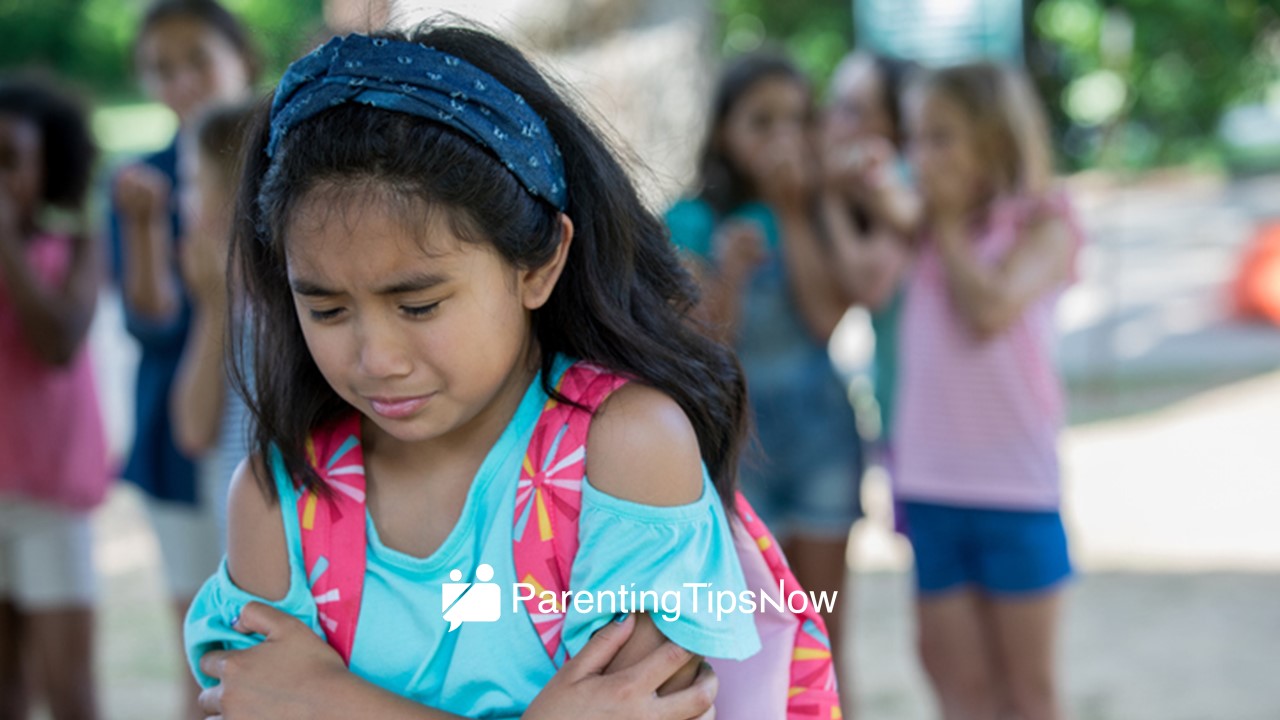Table of Contents
ToggleIn the bustling and diverse playgrounds of the Philippines, a silent yet pervasive threat lurks, targeting the innocence and joy of Filipino children. From the shadows of cyberspace to the harsh realities of physical aggression, bullying in its myriad forms continues to plague the youth of this vibrant nation. As we delve into the intricate tapestry of Filipino childhood experiences, it becomes evident that bullying transcends mere acts of teasing or taunting, manifesting itself in ways that can scar young hearts and minds for years to come. Join us on a journey through the 8 types of bullying Filipino kids face, from subtle online attacks to brutal physical abuse – as we shed light on these dark corners and seek solutions to protect our future generation from this insidious menace.
Overview: Types of Bullying of Filipino Kids in the Philippines
Bullying is a prevalent issue affecting Filipino kids in various forms across the country. Cyberbullying, a relatively modern form of harassment, has become widespread among the youth population in the Philippines. With the increasing use of social media platforms and technological advancements, children are more vulnerable to online abuse that can have serious repercussions on their mental health and well-being.
Another common type of bullying that Filipino kids face is physical abuse. This ranges from overt acts of violence to subtler forms of aggression within schools or communities. The physical harm inflicted on children not only causes immediate pain but also leaves emotional scars that can last a lifetime. It’s crucial for parents, educators, and policymakers to address these different types of bullying in the Philippines collectively to create safer environments for Filipino kids to thrive without fear or intimidation.
Let’s find a way to stop the different types of bullying in the Philippines.
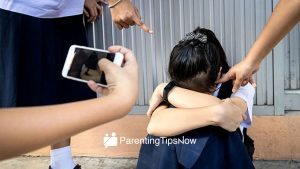
What Are the 8 Types of Bullying Filipino Kids Face? Overview
Bullying among Filipino children manifests in various forms, with different types of bullying in the Philippines leaving a lasting impact on the victims. Cyberbullying, a prevalent form of bullying in this digital age, exposes children to online harassment through social media platforms and messaging apps. This form of bullying brings forth new challenges as it allows perpetrators to hide behind screens while inflicting emotional distress on their targets.
Another common type of bullying Filipino kids face is verbal abuse, which includes name-calling, teasing, and spreading rumors. Verbal abuse can significantly affect a child’s self-esteem and mental well-being, causing long-lasting trauma that may extend into adulthood. Additionally, physical bullying remains a concern among Filipino children, where acts of pushing, hitting, and other forms of physical aggression contribute to both physical harm and psychological distress for the victims.
Here are 8 types of bullying Filipino kids face every single day:
Type of Bullying #1: Physical Bullying
Physical bullying is one of the many types of bullying in the Philippines and is a dangerously prevalent form of harassment that Filipino kids often endure. This type of bullying in the Philippines involves acts of violence, aggression, or physical harm inflicted on the victim by the perpetrator. From hitting and kicking to pushing and punching, physical bullying leaves visible scars on both the body and mind of the targeted child.
The impact of physical bullying goes beyond just bruises; it can lead to long-lasting emotional trauma, fear, and a sense of powerlessness in the victim. And unlike other forms of bullying that may be less visible or easier to disguise, physical abuse leaves little room for denial or dismissal. It’s crucial for parents, teachers, and society as a whole to recognize the signs of physical bullying early on and take proactive steps to address this harmful behavior before it escalates further.
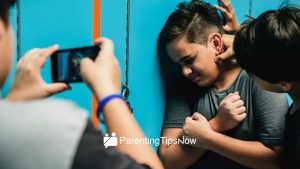
Type of Bullying #2: Verbal Bullying
Verbal bullying is one of the many types of bullying in the Philippines. It is a subtle yet destructive form that often goes unnoticed. This type of bullying involves using words to hurt, humiliate, or intimidate the victim. It can take the form of teasing, name-calling, spreading rumors, or making threats.
One of the most insidious aspects of verbal bullying is its ability to leave lasting emotional scars on the victim. Words have the power to wound deeply and can have a long-lasting impact on an individual’s self-esteem and mental well-being. In Filipino culture, where respect for elders and authority figures is highly valued, verbal bullying can be particularly damaging, as victims may feel powerless to defend themselves against their aggressors.

Type of Bullying #3: Social Bullying
In the landscape of bullying behaviors, social bullying is one of the many types of bullying in the Philippines that stands out as a subtle yet impactful form of mistreatment that often goes unnoticed. Unlike physical aggression or overt verbal attacks, social bullying operates through exclusion, rumor-spreading, and manipulation to undermine a victim’s social standing and sense of belonging. This insidious form of harassment can be just as damaging as its more overt counterparts, causing deep emotional wounds that may take years to heal.
One distinguishing feature of social bullying is its ability to thrive in the shadows of everyday interactions. The perpetrators cloak their actions in offhand comments, veiled threats, and covert gestures that are harder to detect but no less harmful in their effects. By targeting a victim’s relationships and reputation rather than their physical well-being, social bullies create an atmosphere of fear and insecurity that can poison even the most robust interpersonal connections. Understanding this dynamic is crucial for parents, teachers, and peers alike to recognize and combat such behavior effectively before it takes root and spreads its toxic influence further into the community.
Moreover, it’s essential to acknowledge that social bullying isn’t restricted solely to school hallways or playgrounds; it has evolved alongside technology to infiltrate online spaces as well. Through cyberbullying tactics like spreading malicious rumors via social media or excluding someone from group chats, individuals can wield immense power over their targets without ever having direct physical contact.

Type of Bullying #4: Cyberbullying
Cyberbullying is a prevalent form of harassment that many teen Filipinos face today. Unlike traditional forms of bullying that happen physically, cyberbullying occurs online through the use of social media, messaging apps, or other digital platforms. It can take the form of spreading rumors, sharing embarrassing photos or videos, or sending hurtful messages anonymously, making it harder to escape from the harassment.
One unique aspect of this type of bullying is its 24/7 presence in a child’s life. The constant connection to devices means that victims may struggle to find respite from the abuse, leading to heightened feelings of anxiety and isolation. Moreover, the anonymity afforded by online interactions can embolden perpetrators, who may not face immediate consequences for their actions, creating a cycle of persistent intimidation and psychological harm for those targeted. Cyberbullying is one of the many types of bullying in the Philippines that highlights the evolving nature of bullying in the digital age and underscores the importance of fostering safe online environments for children to thrive without fear.
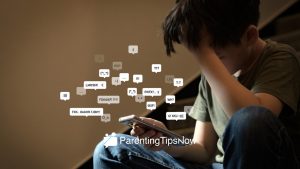
Type of Bullying #5: Racial Bullying
Racial bullying is one of the many types of bullying in the Philippines that is a particularly harmful form of harassment that Filipino kids may face. This type of bullying targets individuals based on their race or ethnicity, leading to discrimination, prejudice, and exclusion. Filipinos are diverse in terms of looks and skin color due to their history of colonization and blending of cultures—this diversity can sometimes be exploited by bullies seeking to cause harm.
Racial bullying can have long-lasting effects on a child’s mental health, self-esteem, and sense of belonging. It can lead to feelings of isolation and alienation among Filipino children who are targeted for their racial background. As a society that values inclusivity and respect for all individuals, it is crucial to address racial bullying promptly and effectively in order to create a safe environment where every child feels accepted regardless of their ethnicity or heritage.
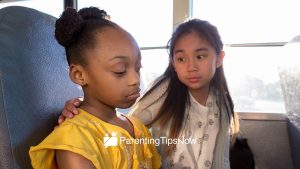
Type of Bullying #6: Religious Bullying
Religious bullying is one of the many types of bullying in the Philippines. It is a unique form of harassment that targets individuals based on their faith or beliefs. In a diverse country like the Philippines, where various religions coexist, religious bullying can take on many forms. It may involve mocking someone’s religious practices, pressuring them to conform to a certain belief system, or even using religion as a weapon to exert power and control over others.
One disturbing aspect of religious bullying is how it often goes unrecognized or minimized compared to other forms of harassment. Whether it’s subtle comments questioning one’s faith or more overt acts of discrimination intertwined with religious biases, the impact of such behavior can be deeply damaging. Victims may feel isolated, ashamed, and conflicted about their identities when faced with relentless attacks on their religious convictions. This type of bullying underscores the importance of fostering respect and understanding for different faiths within Filipino society to create a culture of acceptance and inclusivity for all.

Type of Bullying #7: Sexual Bullying
Sexual bullying is one of the many types of bullying in the Philippines; that is a particularly insidious form of harassment that Filipino kids often face, but it remains largely unaddressed in discussions on bullying. This type of bullying involves unwelcome sexual comments, gestures, or actions that target an individual’s body or sexuality. It can manifest in various settings, such as schools, online platforms, and even within peer groups. Victims of sexual bullying often endure feelings of shame, guilt, and fear, making it challenging for them to speak up and seek help.
The impact of sexual bullying on Filipino children can be long-lasting and severe, leading to emotional trauma and lasting psychological distress. Perpetrators may use their power dynamics to intimidate victims into compliance or silence. Moreover, the normalization of sexually explicit content in media and on online platforms has inadvertently created an environment where such behavior is deemed acceptable by some individuals. By shedding light on this lesser-discussed aspect of bullying, we can work towards creating safer spaces for all children to thrive without the fear of harassment based on their sexuality or bodies.

Type of Bullying #8: Disability Bullying
Disability bullying is one of the many types of bullying in the Philippines. It is a pervasive form of mistreatment that targets individuals with physical or mental impairments. Children with disabilities often face mockery, exclusion, and outright discrimination in school settings, making them more vulnerable to emotional distress and social alienation. This type of bullying not only harms the immediate victim but also perpetuates harmful stereotypes about disability within society. It is crucial for schools and communities to actively address this issue by promoting inclusivity and fostering empathy among students.
Understanding the dynamics of disability bullying requires an examination of power imbalances and societal attitudes towards difference. Perpetrators may exploit a disabled person’s vulnerability as a means to assert dominance or reinforce their own sense of superiority. Moreover, misconceptions about disability can fuel ignorance and prejudice, creating an environment where acts of aggression are erroneously justified or overlooked. By acknowledging these complexities, we can work towards dismantling ableist structures and advocating for the rights and dignity of all individuals, regardless of their abilities.

Addressing Bullying Filipino Kids For a Safer Environment
As a society, it is crucial to address these types of bullying among Filipino children to create a safer and more nurturing environment for the younger generation. Bullying can have long-lasting effects on a child’s mental health and overall well-being, making it imperative for adults to intervene and support victims. By promoting empathy, respect, and kindness in educational settings and at home, we can work towards reducing instances of bullying and fostering a culture of compassion.
Furthermore, parents and educators play key roles in identifying early signs of bullying behavior and addressing them promptly. It is essential to provide children with the tools to communicate their experiences effectively so that necessary interventions can take place. Teaching kids about healthy boundaries, empathy, and conflict resolution skills equips them with the resilience needed to navigate challenging social situations confidently. Through open conversations and proactive measures, we can create a community where every child feels safe, valued, and supported against all forms of bullying.
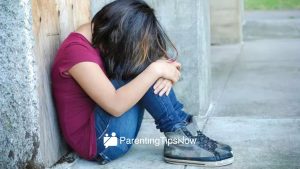
How Do We Stop These Different Types of Bullying in the Philippines?
To effectively address the different types of bullying prevalent in the Philippines, a multi-faceted approach is necessary. Firstly, schools and educational institutions must prioritize comprehensive anti-bullying campaigns that focus on promoting empathy, mutual respect, and conflict resolution skills among students. Additionally, parental involvement is crucial in creating a supportive environment at home to protect children from being both victims and perpetrators of bullying.
Moreover, authorities should enforce strict legislation against cyberbullying and other forms of online harassment to protect Filipino youth from the dangers of the digital realm. Community outreach programs can also play a vital role in fostering a culture of inclusivity and kindness within neighborhoods, providing resources for both victims and bullies to seek help and support. By collectively advocating for a safe and nurturing environment for children to grow up in, we can work towards eradicating all forms of bullying in the Philippines.
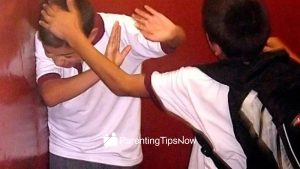
The Role of Parents in Preventing These Types of Bullying
Parents play a crucial role in preventing the various types of bullying that Filipino kids face. By fostering open communication with their children, parents can establish a safe space for them to express any concerns or experiences of bullying. Teaching children about empathy and respect for others can help prevent behaviors that may lead to bullying situations. Additionally, monitoring their child’s online activities and educating them about the dangers of cyberbullying are essential in today’s digital age.
Furthermore, parents need to actively listen to their children’s experiences and take any signs of bullying seriously. They should work with teachers and school administrators to address the issue effectively and ensure their child feels supported. Instilling confidence and self-esteem in children can also make them less vulnerable targets for bullies, empowering them to stand up for themselves when needed. Ultimately, parents must be proactive in creating a safe environment at home that promotes kindness and understanding as key tools in preventing various forms of bullying among Filipino youth.
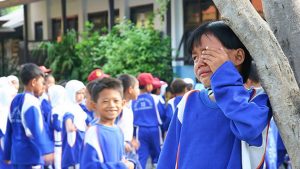
The Role of Schools in Preventing These Types of Bullying
Schools play a crucial role in preventing various types of bullying among Filipino children. By creating a supportive and inclusive environment, schools can empower students to speak up against bullying and seek help when needed. Educators can implement anti-bullying programs that educate students about the harmful effects of different forms of bullying, promoting empathy and understanding among peers.
Furthermore, schools should enforce strict policies against bullying behavior, ensuring that there are clear consequences for those who engage in such actions. Teachers and school staff must be vigilant in monitoring student interactions both in person and online, providing guidance and support to victims of bullying. By fostering a culture of respect and kindness within schools, educators can effectively combat the prevalence of different types of bullying that Filipino children may face on a daily basis.
Final Thoughts: 8 Types of Bullying Filipino Kids Face
As we reflect on the various types of bullying Filipino kids endure, it becomes evident that the impacts extend far beyond just the immediate emotional and physical ramifications. Cyberbullying, in particular, poses a unique challenge as it infiltrates their safe spaces at all hours, leaving no corner untouched by its toxicity. This digital form of abuse can perpetuate feelings of isolation and hopelessness among young minds ill-equipped to navigate such intricate webs of negativity.
Furthermore, cultural bullying adds another layer of complexity to the mix. The pressure to conform to societal norms and expectations often leaves Filipino children feeling inadequate or ostracized if they fail to meet predetermined standards set by outdated traditions. This type of bullying not only affects self-esteem but also inhibits individuality and personal growth, stifling creativity and innovation in a country teeming with potential. The intersectionality of these various forms of bullying underscores the urgent need for comprehensive interventions that address these issues at their roots within Filipino society.

